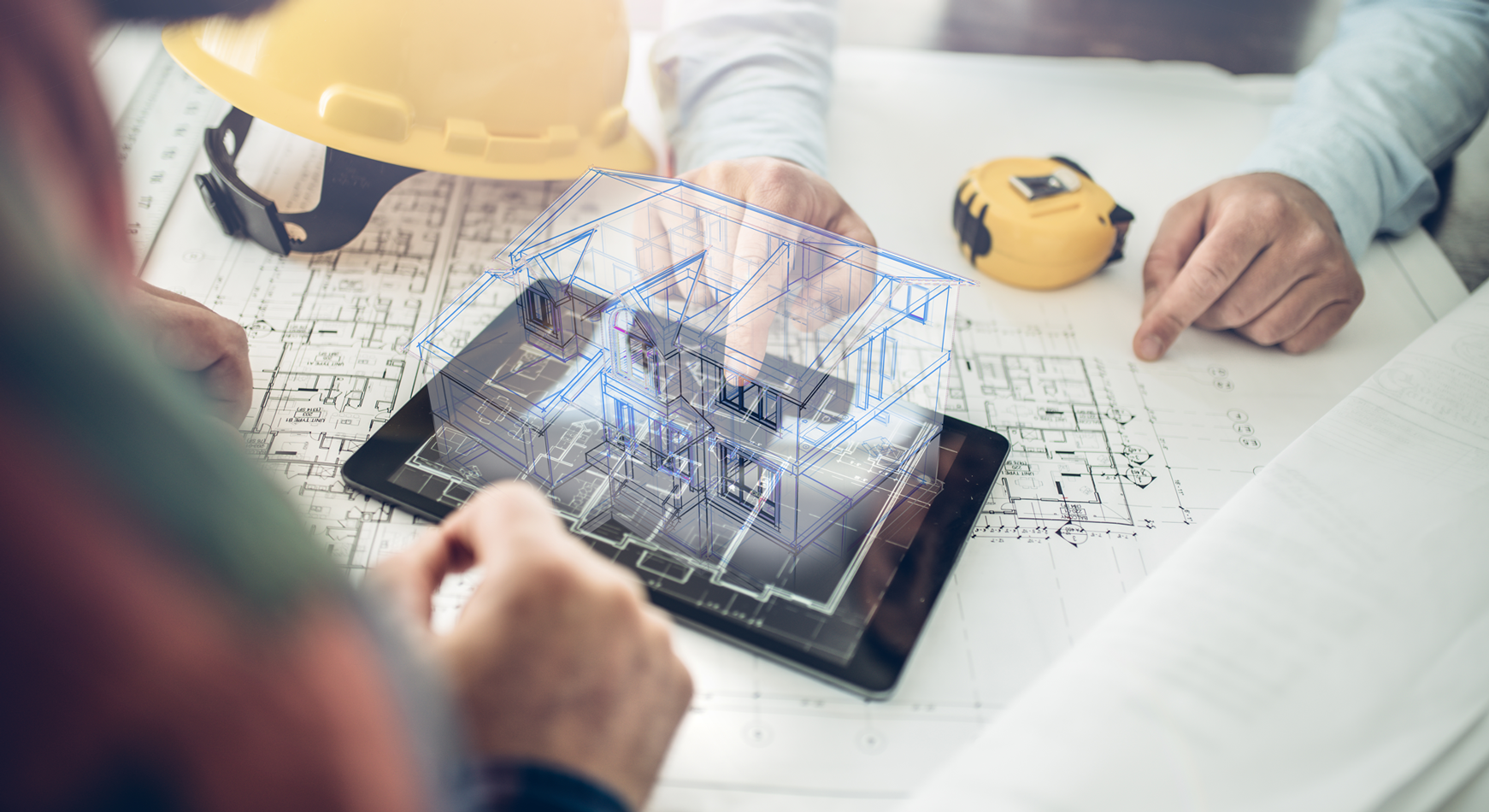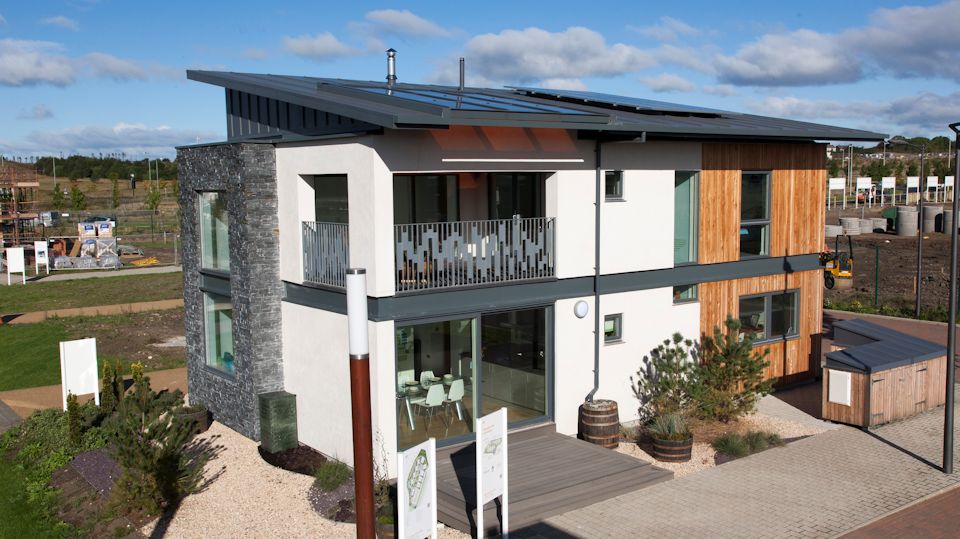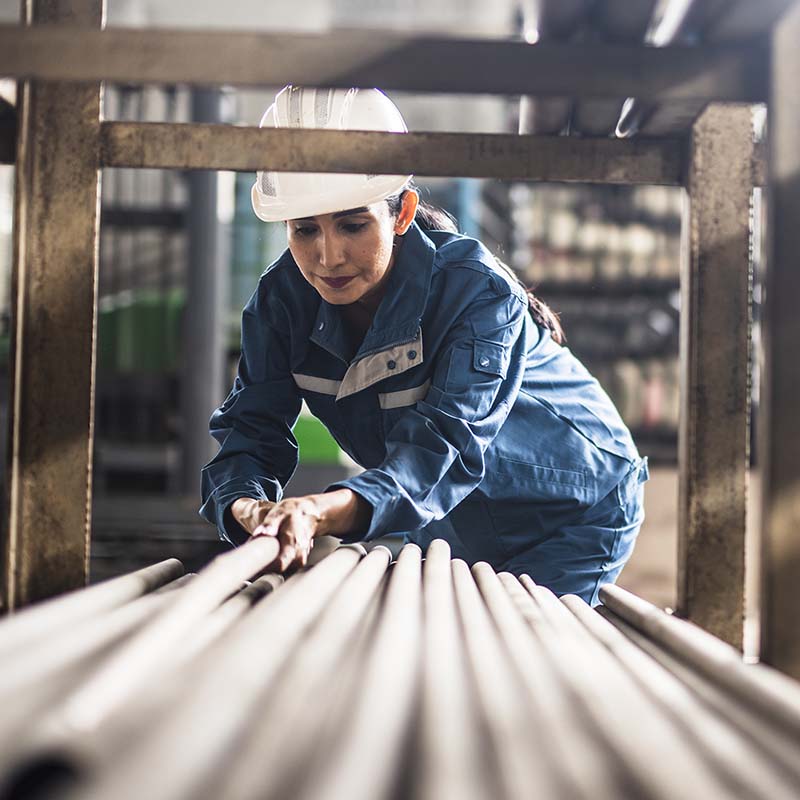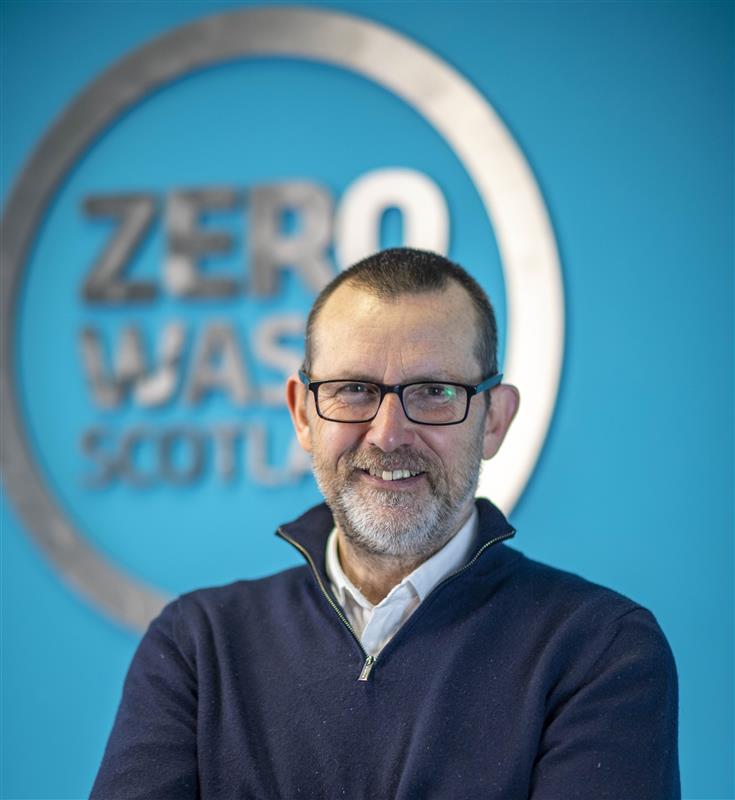
Resource Efficient House - A demonstration construction project
This award-winning house is a contemporary, three-bedroom home which has been awarded not only the Gold Standard but Platinum Aspect 1 as a net-zero carbon house. It was constructed by Zero Waste Scotland in partnership with Tigh Grian Limited.

Designed and built in 2013, The Resource Efficient House is a key feature and visitor attraction at the BRE Innovation Park at Ravenscraig, the national hub for construction industry innovation located within one of Scotland’s largest-ever regeneration zones.
Aims
A demonstration project the main aims when we built the house were to:
- demonstrate how the construction sector can lower the running costs of homes through good design
- demonstrate how good design using modern construction methods can reduce material use and waste generated during construction.
- demonstrate how a home can be designed so that all materials and products in the home can be recovered and reused or recycled at the end of their or the buildings life.
At first glance, this building may appear to be yet another modern, contemporary building with clean design lines. But there is far more to it than meets the eye. The Resource Efficient House is a real departure from the average home and the norms of the Scottish construction industry which created over 600 million tonnes of waste in 2011.
This house was built to showcase various principles of resource efficiency throughout its lifecycle. From design and component manufacturing through construction to its function as a family home and beyond.
The building embraced modern methods of construction. Using a combination of offsite construction and modular construction improved productivity.
In a world where resources are becoming even scarcer and the need for sustainable living even greater this home could herald a house building revolution.
Benefits of modular design for construction
The modular design comprised four pods which were factory-built off-site using structural insulated panels. This helped to;
- control costs;
- dramatically reduce build time;
- improve build quality;
- reduce waste and ;
- save countless site-building headaches.
Watch the time-lapse video that shows how the house was transported to Ravenscraig as four pods and installed on the plot in a single day! That’s fast by anybody’s standards.
There was a firm commitment to use either reclaimed products or those with high recycled content. That principle was built into the very foundations of the house with concrete foundations mixed on-site using 100% recycled aggregate and steel that can be fully re-used. As well as material efficiency and waste reduction, reducing energy and water use during the construction phase were also important. We also ensured through good design that the buildings would be energy and water efficient throughout its lifetime achieving X standard (rating) and demonstrating how good design can make an impact to tackle fuel poverty.
As you’d expect it’s an airtight, energy-efficient home. But what you might not expect is that the thermal insulation quilts are made from recycled glass and plastic bottles.
Considering the exterior, the home’s external walls feature locally sourced larch and reconstituted stone with a lime render. Timber windows and doors are made from sustainable, certified forests, with an energy –efficiency U-value of 0.9.
The pleasant, practical living space provides a template for sustainable living.
Given its south-facing orientation, the house enjoys an abundance of natural light but is also fitted with low-energy LED lighting. Lighting is enhanced with a polysolar thin film photovoltaic photo voltaic glazed terrace roof. For microgeneration of energy, there are roof-mounted polycrystalline photovoltaic panels. Heating is provided with an ultra-efficient stove using sustainably sourced wood pellets. The entire house operates with heat recovery ventilation while smart sensors and metering continually monitor the house’s performance
Water conservation is well-covered too. Toilets are low-flush, the bath is low-volume (made with 55% recycled content) and a water recovery system re-uses waste water. Domestic hot water supply is managed with a combi boiler plus an air source heat pump cylinder.
The first-floor balcony has an undercover clothesline, so no need for an energy-guzzling tumble dryer and has space to allow for ‘grow your own’ veg.
Finishing touches - recycling and reclamation in design
An environmentally-friendly approach is also demonstrated through the home’s interior design details. All materials are recycled, from the paint on the walls and recycled carpet tiles to the kitchen worktop.
The oak stairs are crafted from a windfall tree and reclaimed steel. In the kitchen, quality worktops are made from recycled plastic cups while the kitchen units comprise 70% recycled content. The in-built segregated recycling drawer meets 2016 Gold Building Regulations.
There is a host of reclaimed furniture to enjoy too. Zero Waste Scotland encourages furniture reuse and you can source quality products through Revolve-accredited stores.
When you need to leave the house, you can grab two wheels from the bike racks or power up four from the electric car charging point.
The Resource Efficient House represents an unprecedented demonstrable model for the house-building industry. It is low-carbon and low-cost to run because its environmental credentials are based on sound economics. From its foundations to its finishing touches, this house proves that we can stop using sustainable living as a buzz phrase and start building it in reality.
Support for your construction project
If you would like to discuss how your business or project could work with Zero Waste Scotland to receive specialist support and advice in this theme, please email the team.
Our support is funded by the Scottish Government and by the European Regional Development Fund through the £73 million Resource Efficiency Circular Economy Accelerator Programme.







